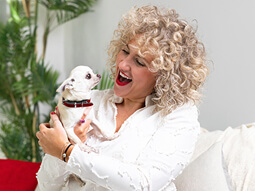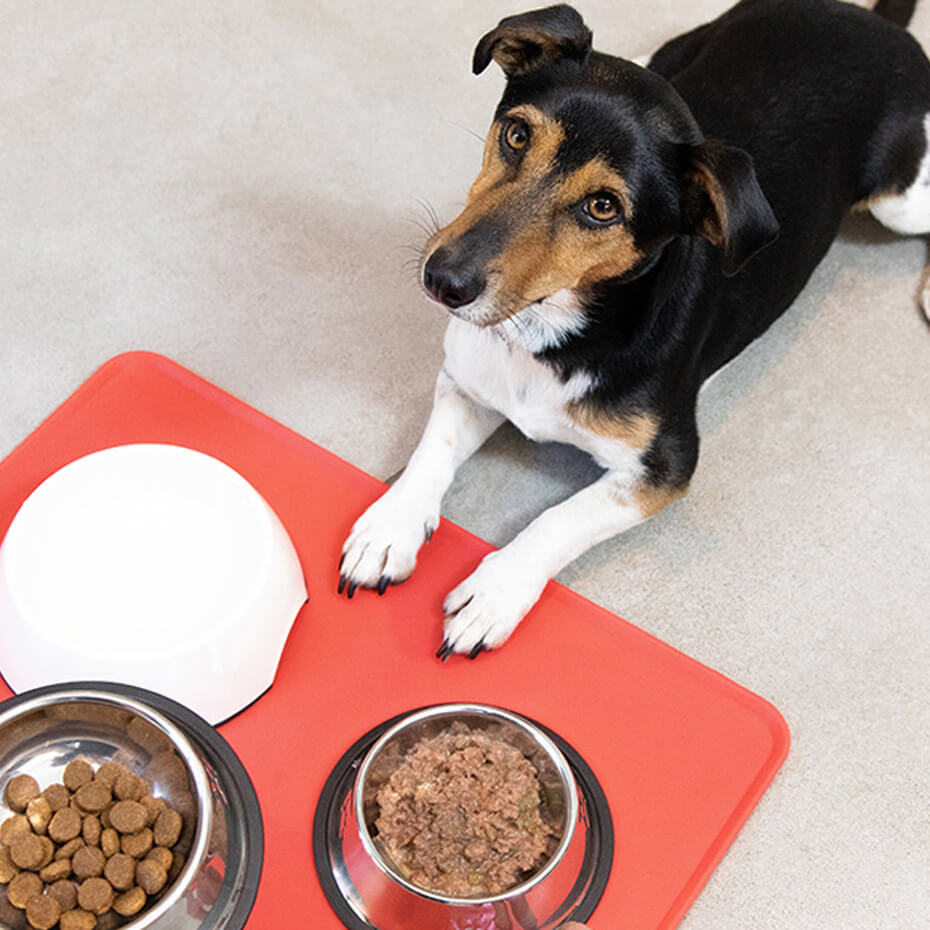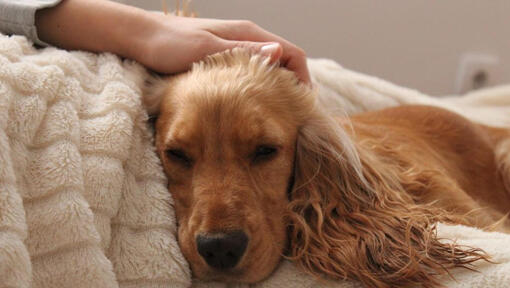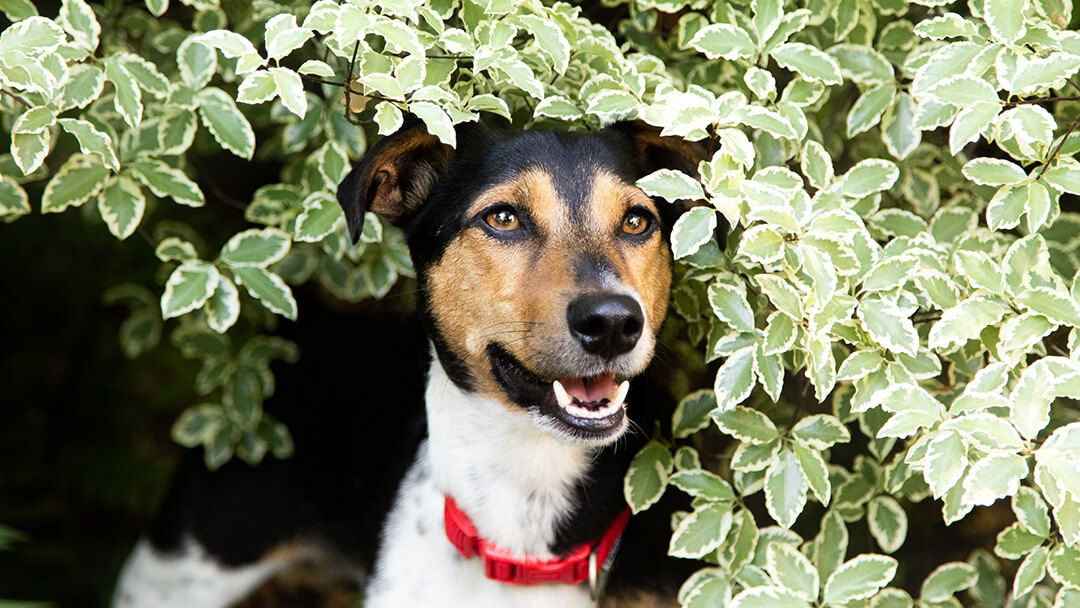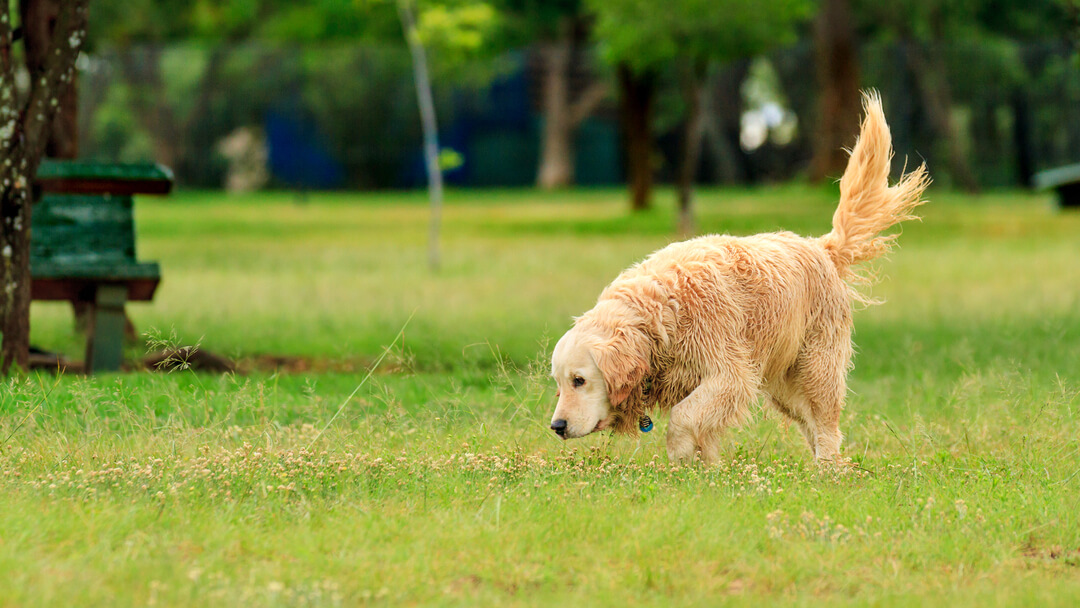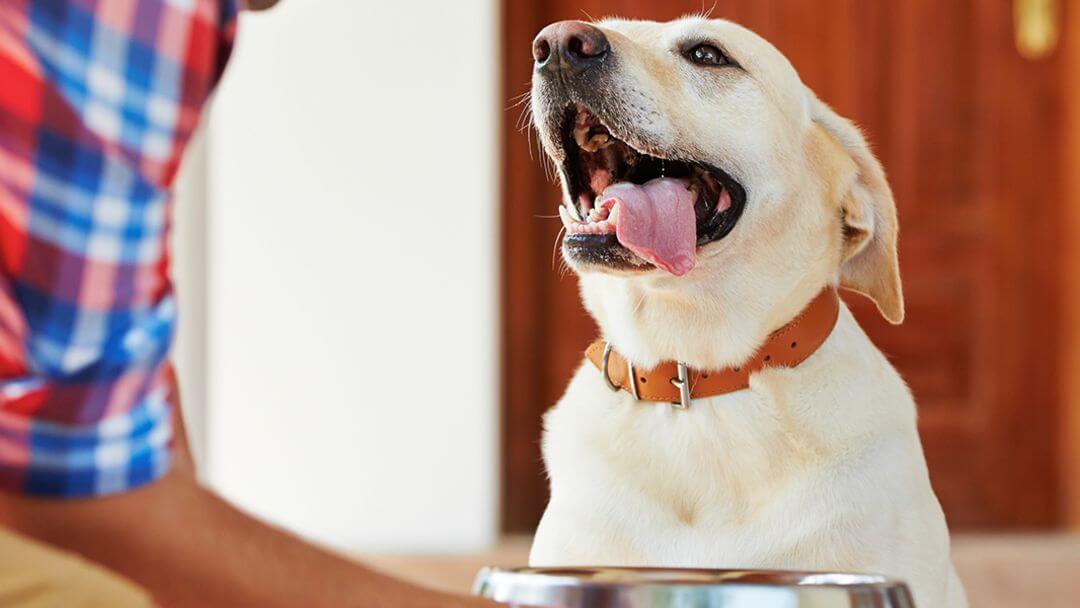
We've all seen the adorable twitch of paws and heard the odd woof whilst our dogs are sleeping, but do dogs really dream? Find out more and learn about what dogs dream about with Purina.
All dog owners have seen and heard their pet’s adorable dreamy antics. Maybe you’ve heard a sleepy woof or seen them paddle their paws; perhaps you’ve even noticed a subtle growl. But do dogs really dream? And if they can, then what do dogs dream about?
Do dogs dream?
Let’s look at this scientifically: we know that human beings have dreams because research has shown that the electrical impulses in the brain can become active during sleep.
Researchers have used similar techniques to monitor our canine companions, in order to determine whether those cute night time shuffles are evidence of dreams, or something different. Using an electroencephalogram to test for brain wave activity during sleep in dogs, scientists discovered that we have even more in common with our furry friends than we thought! It seems very likely that dogs do dream, just as we do.
Dog sleep patterns and dreams
You might already know that human beings have different stages of sleep during the night, and that dreaming is most likely to occur at a specific point in the sleep cycle. Incredibly, this seems to be true for dogs as well!
Your pet will enter a stage of sleep known as ‘REM’, which stands for rapid eye movement. At this point, your dog’s breathing will begin to sound more irregular and their eyes will start to move around more rapidly. You may notice their eyelids flickering. It is during this stage of sleep that dog dreams are most likely to happen.
Signs your dog is dreaming
If you’ve already noticed that your dog is in a deep stage of sleep, or REM, then it’s more likely to be dreaming. This type of sleep doesn’t happen very quickly, so it’s less likely to occur during a quick power nap in the afternoon than a longer sleep.
During REM, your dog’s breathing will become irregular and they will experience rapid eye movement.
Other signs of dog dreams? Just like humans, dogs seem to react subconsciously to dream images during their sleep. You might hear a growl, whimper, whine or purr. They may make movements with their legs, as though running. You could notice the occasional twitch or shudder. Dogs have even been known to bark in their sleep—sometimes even waking themselves up!
What do dogs dream about?
The most intriguing question of all! The scientific research all points to the fact that our dogs have dreams just like we do: but how can we tell what it is that they’re dreaming about?
Unfortunately, until the day we’re able to see inside their heads, or learn how to interpret barks into a human language, we’ll never truly know! However, it is likely that dogs dream in a similar way to humans: reliving their daily experiences and enacting their usual activities. So if your dog normally barks at cats, and you notice them bark during their sleep, they may well be dreaming of the cat next door!
What we do know is that small dogs tend to dream more frequently than larger dogs within their sleep pattern. Lynn Buzhardt DVM notes that research by psychology professor Stanley Coren indicates that the length and frequency of dreams may be linked to the dog’s size. For example, a Toy Poodle might display the signs of dreaming up to once every ten minutes, whereas a dog the size of a Golden Retriever may only dream once every 90 minutes.
Is my dog dreaming or having a seizure?
Sometimes, the symptoms of dog seizures can seem similar to the signs that your dog is dreaming. But there are ways to tell the difference.
Dog seizures are abnormal motor responses originating in the brain, whereas dog dreams are simply normal electrical impulses: they might be reliving their walk from earlier in the day, or remembering that time they chased a squirrel up a tree!
The signs of dog dreams are the twitching of muscles and paddling of feet, and although these can also be symptoms of a seizure, they present in very different ways. Gentle twitches during a dream will only last for a short time, whereas the convulsions of a seizure may last much longer, be more violent, and generally happen in limbs that have also become stiff and rigid. A dog experiencing a seizure may also drool or foam at the mouth.
It is particularly obvious if an animal has experienced a seizure when they regain consciousness: a dreaming dog will seem fine, if a little sleepy, whereas a dog that has had a seizure will appear disoriented and potentially distressed.
How do you know if your dog is having a bad dream?
The signs that your dog is having a bad dream are just like the signs that your dog is anxious, distressed, or annoyed when they are awake.
If your dog is simply paddling their legs and making noises of excitement—they’re probably having a good dream, most likely about dinner! But if your dog is whining, crying or growling, then they may be having a bad dream, in which they feel threatened or anxious.
Is it OK to wake a dreaming dog?
If you believe your dog is having a bad dream, it’s best not to disturb them—even though it may be tempting to wake them up and comfort them. It could take your pet a moment to realise that they are no longer asleep, and you don’t want to risk them lashing out as though still in the dream. Although it can feel distressing to watch your dog experience a bad dream, try to remember—it is just a dream!
